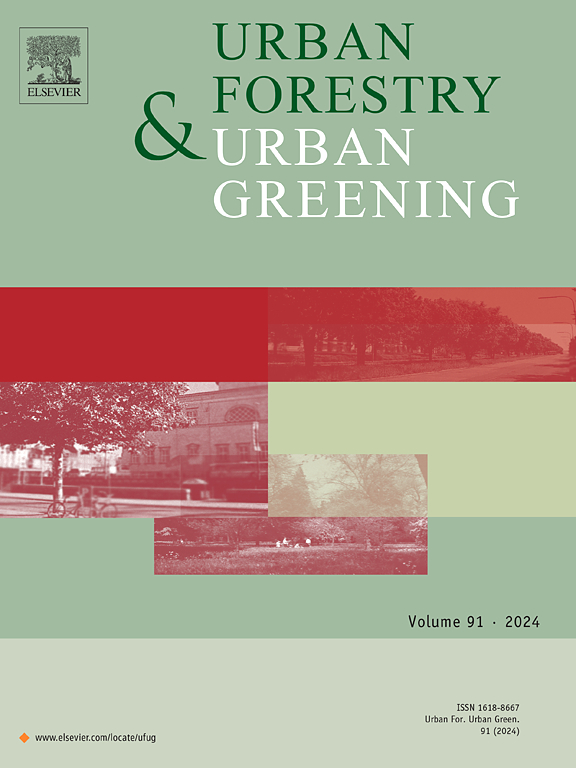A general allometric model for urban vines to estimate above-ground biomass
IF 6
2区 环境科学与生态学
Q1 ENVIRONMENTAL STUDIES
引用次数: 0
Abstract
Vines play an important role in urban vertical greening, while there is no practical method to estimate above-ground biomass of urban vines. Allometric equation is an effective approach for non-destructive estimation of biomass. However, due to lacking mechanical support tissue, vines may have distinctive allometric laws which existing allometric equations derived from self-supporting plants may not be applicable. Here, we collected 259 branches from 12 different species of urban vines to analyze the allometric relationships by standard major axis (SMA). We also built mixed-effect models and used ANOVA to investigate the effects of biotic and abiotic factors on these allometric relationships. Our results showed that leaf-stem biomass partition scaling allometric relationships of vine branches were stable and there was little significant difference among species and life forms, which showing strong biophysical constraints and supporting the predictions of theoretical allometry model such as metabolic scaling theory (MST). Almost all the biotic and abiotic factors have no significant effect on the exponents of diameter-leaf/stem biomass allometric relationships while only had weak effects on constants. Based on these results, we proposed a series of generalized equations to estimate above-ground biomass of common urban vines. Considering our finding that vines exhibit robust biophysical constraints and phylogenetic niche conservatism, which are hardly being affected by environmental factors, the utilization of general allometric equations may be a highly promising method to predict above-ground biomass of urban vines in the future.
求助全文
约1分钟内获得全文
求助全文
来源期刊

Urban Forestry & Urban Greening
FORESTRY-
CiteScore
11.70
自引率
12.50%
发文量
289
审稿时长
70 days
期刊介绍:
Urban Forestry and Urban Greening is a refereed, international journal aimed at presenting high-quality research with urban and peri-urban woody and non-woody vegetation and its use, planning, design, establishment and management as its main topics. Urban Forestry and Urban Greening concentrates on all tree-dominated (as joint together in the urban forest) as well as other green resources in and around urban areas, such as woodlands, public and private urban parks and gardens, urban nature areas, street tree and square plantations, botanical gardens and cemeteries.
The journal welcomes basic and applied research papers, as well as review papers and short communications. Contributions should focus on one or more of the following aspects:
-Form and functions of urban forests and other vegetation, including aspects of urban ecology.
-Policy-making, planning and design related to urban forests and other vegetation.
-Selection and establishment of tree resources and other vegetation for urban environments.
-Management of urban forests and other vegetation.
Original contributions of a high academic standard are invited from a wide range of disciplines and fields, including forestry, biology, horticulture, arboriculture, landscape ecology, pathology, soil science, hydrology, landscape architecture, landscape planning, urban planning and design, economics, sociology, environmental psychology, public health, and education.
 求助内容:
求助内容: 应助结果提醒方式:
应助结果提醒方式:


